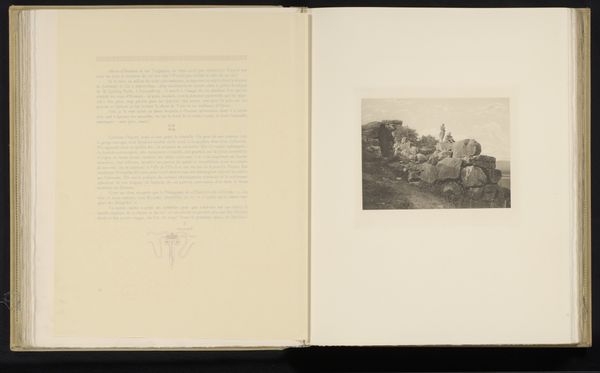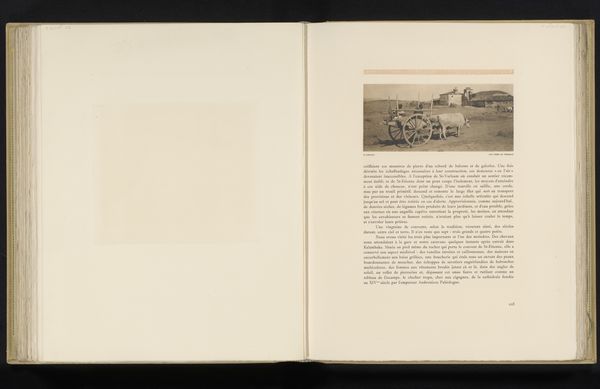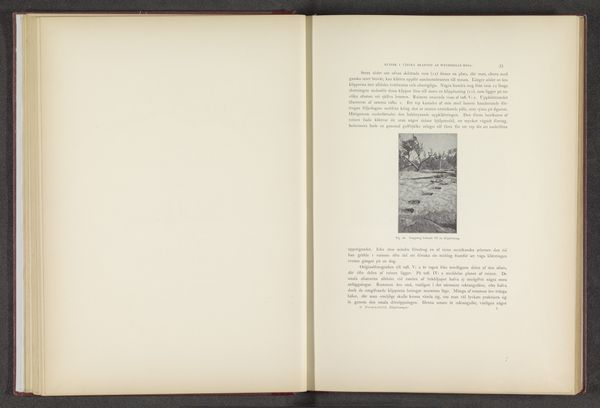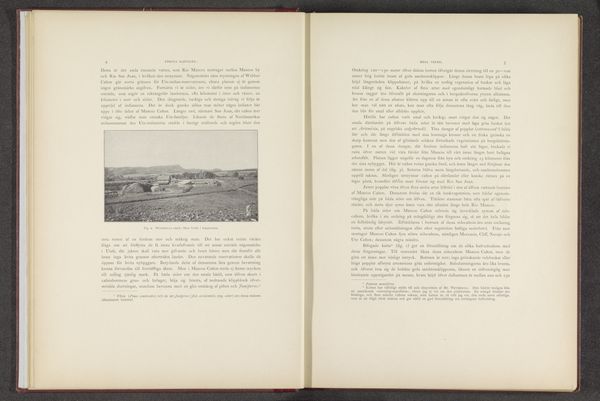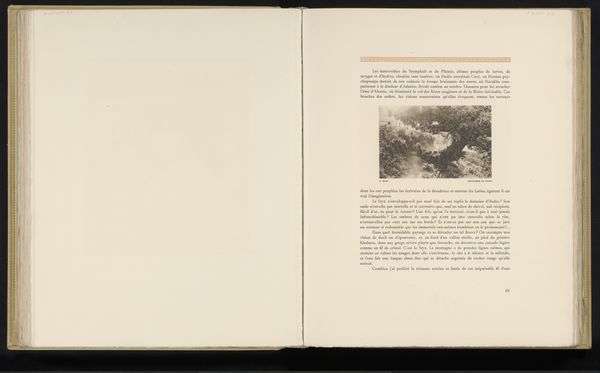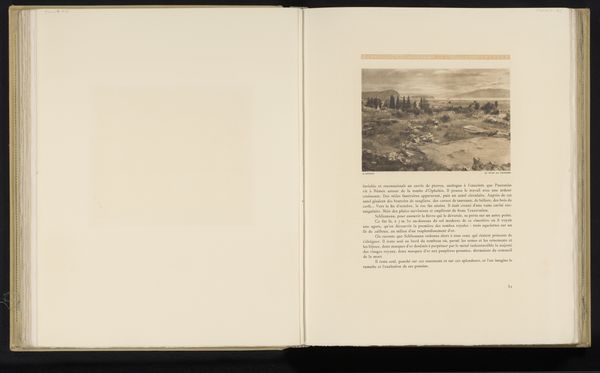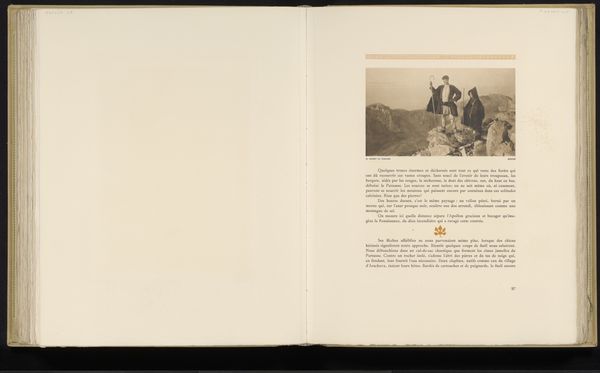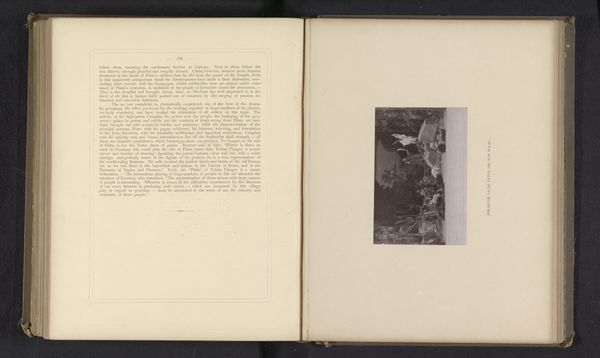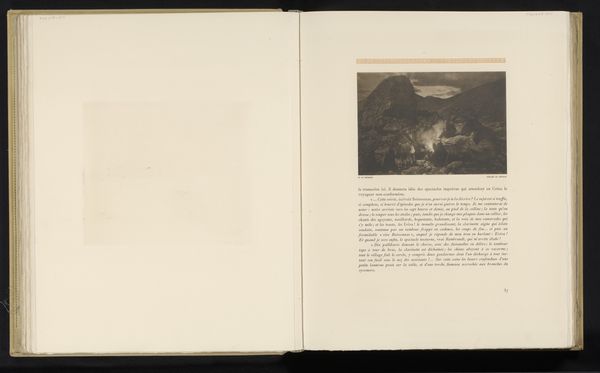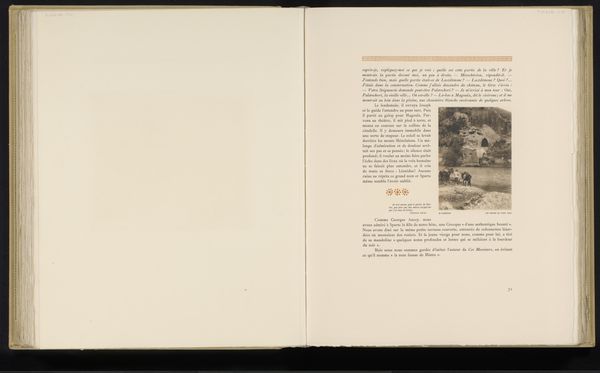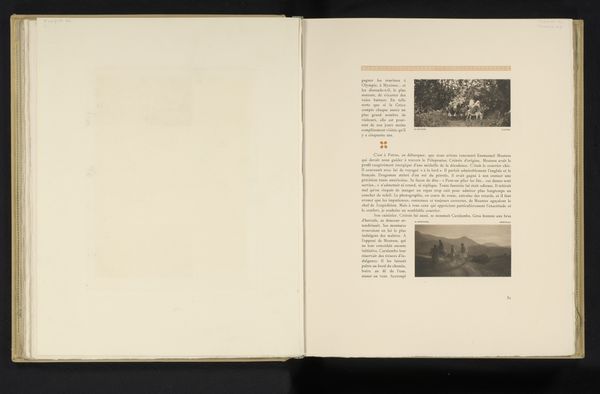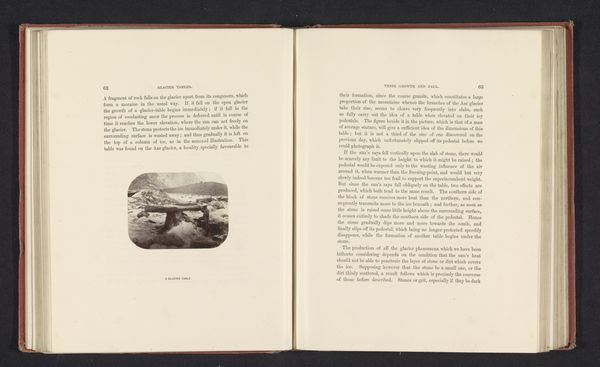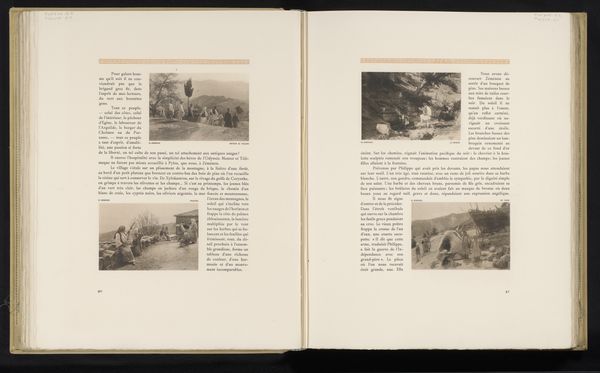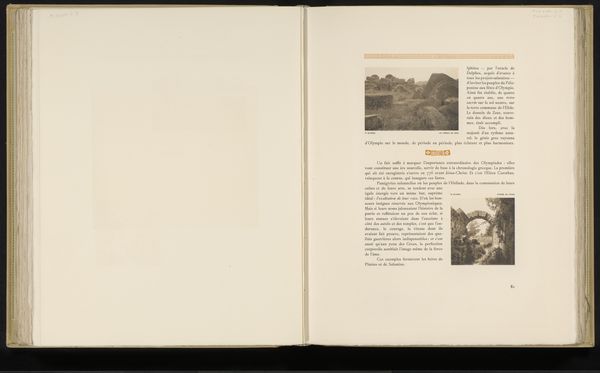
Schaapsherder met kudde bij de Eurotas, op de achtergrond de Taigetos before 1910
0:00
0:00
photography, gelatin-silver-print
#
pictorialism
#
landscape
#
photography
#
gelatin-silver-print
#
genre-painting
Dimensions: height 168 mm, width 226 mm
Copyright: Rijks Museum: Open Domain
Curator: This gelatin silver print is entitled, "Schaapsherder met kudde bij de Eurotas, op de achtergrond de Taigetos," or "Shepherd with flock near the Eurotas, with the Taigetos in the background," and comes to us from photographer Fréderic Boissonnas, made before 1910. Editor: It's quite serene, really. A solitary figure tending his flock. The tones feel soft, almost dreamlike. And those mountains in the background, how vast. Curator: Boissonnas was a key figure in the Pictorialism movement. His work often evokes a classical past, reflecting the growing interest in ancient Greece at the turn of the century. His choice of a shepherd reinforces a sort of idyllic vision connected to a classical past. Editor: Interesting to consider how that intersects with labour. Shepherding, historically, isn't always seen through such a romanticized lens. This is hard work, made beautiful through Boissonnas's chosen process. And a gelatin silver print meant accessibility. These could be mass-produced to a certain extent and distributed, democratizing the artwork in some ways. Curator: Precisely. The gelatin silver printing process enabled a wider distribution of these images, spreading this idealized view of the Greek countryside and its inhabitants. It helped create and circulate a certain idea about what Greece represented – both historically and culturally. What does the production and display of such images do to further establish the mythology and legacies connected to Greece? Who is able to control and circulate such stories? Editor: Thinking about materials again: gelatin, often derived from animal byproducts. Is there commentary here on human/animal labor being introduced, maybe unintentionally? Even consumption—people had to consume and break down an animal, like those within the sheep's heard— to make such processes exist. How might our consideration of raw materials change the overall reception and consideration of this work? Curator: Absolutely. Analyzing this piece—or any work, really—forces us to grapple with complex histories: environmental, societal, labor. What Boissonnas wanted to be romantic could actually introduce the raw—the unglamorous aspects that made everything happen in reality. Editor: I came in initially captivated by the aesthetic of it all, but learning about its social and historical place and the materiality really reframes its perceived intent, maybe challenges it as a result. Curator: Yes, situating artwork within its historical context expands the discussion; it might even make space to consider new—more complicated, and thus rewarding—viewpoints.
Comments
No comments
Be the first to comment and join the conversation on the ultimate creative platform.
